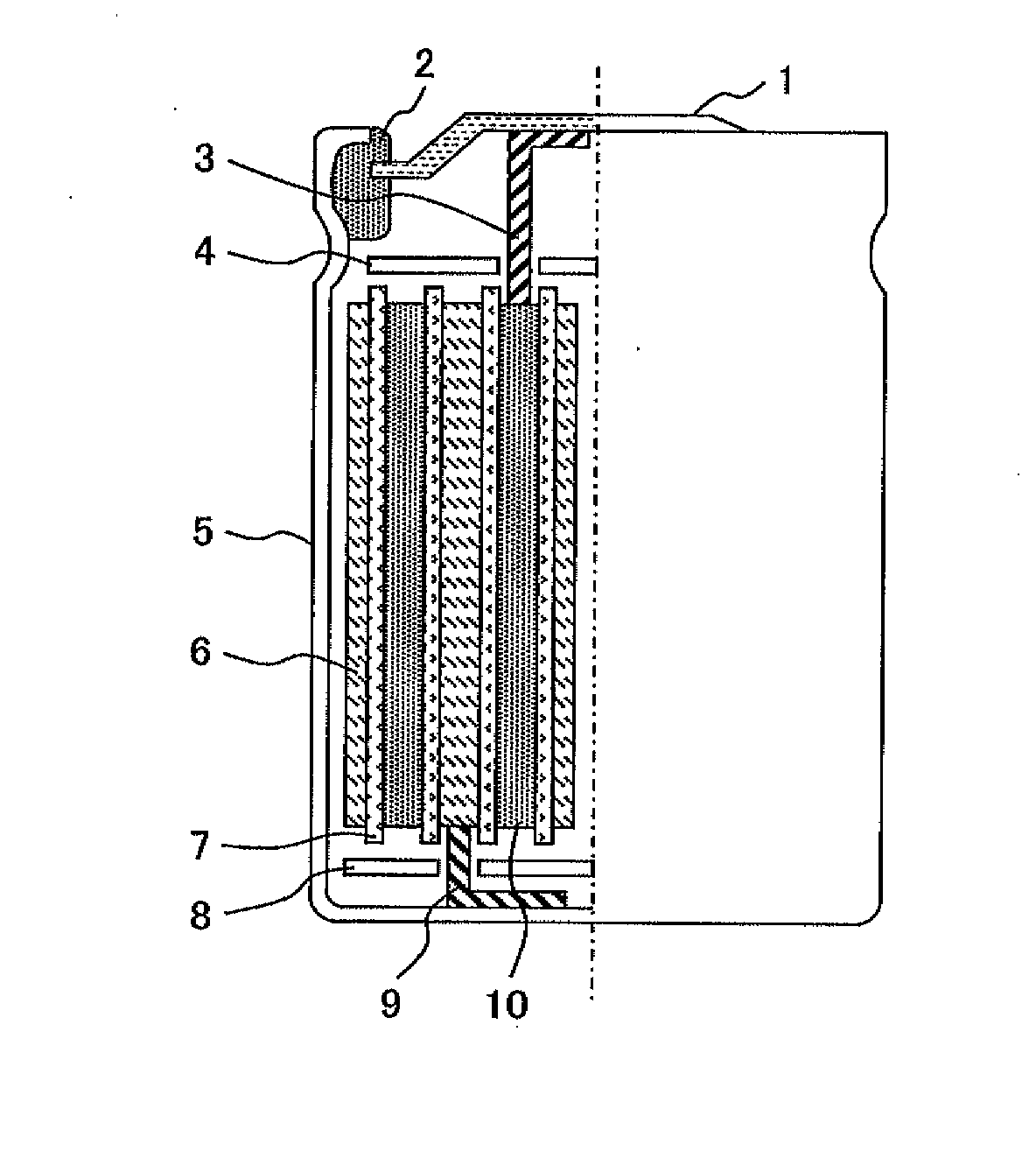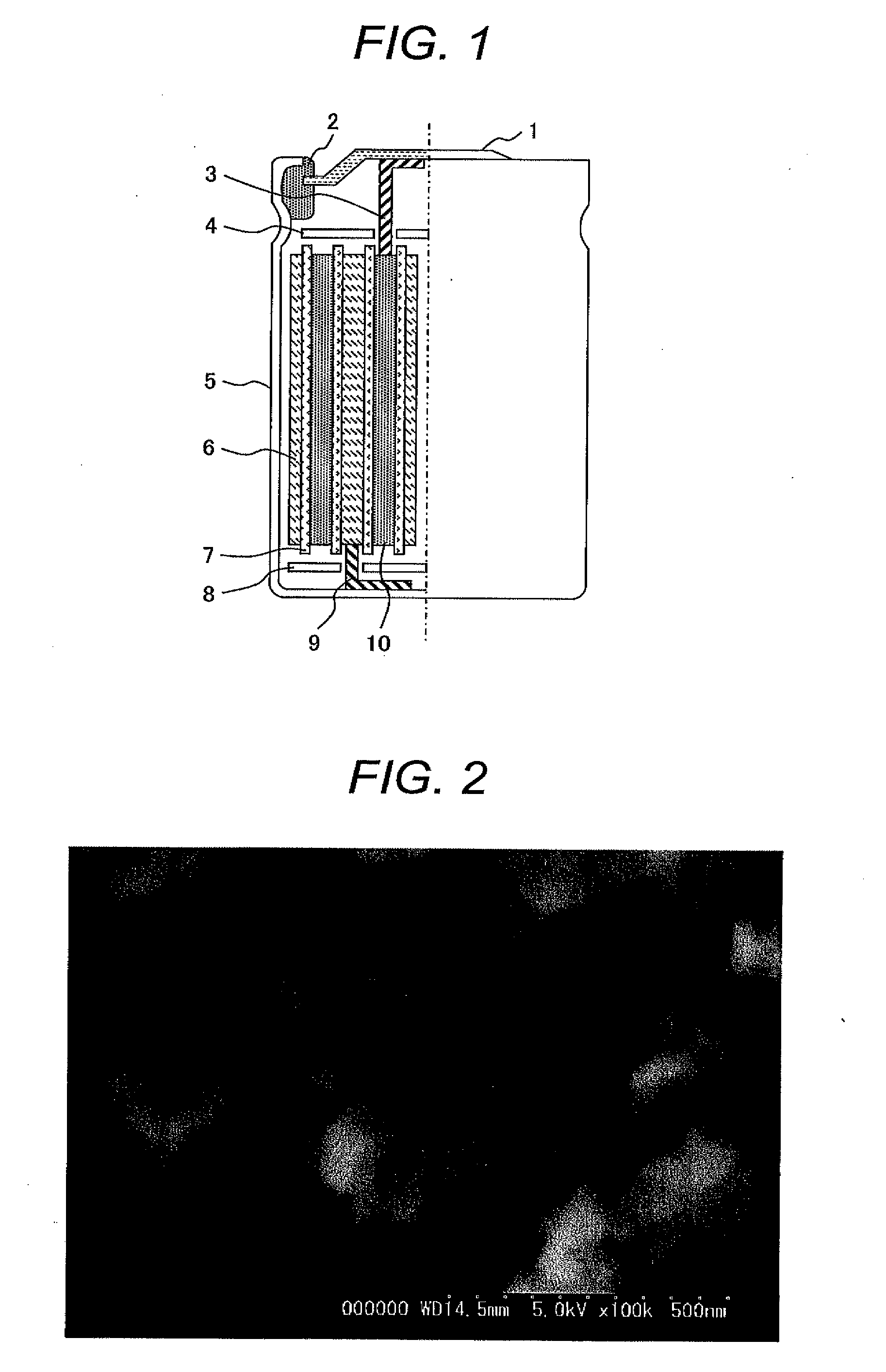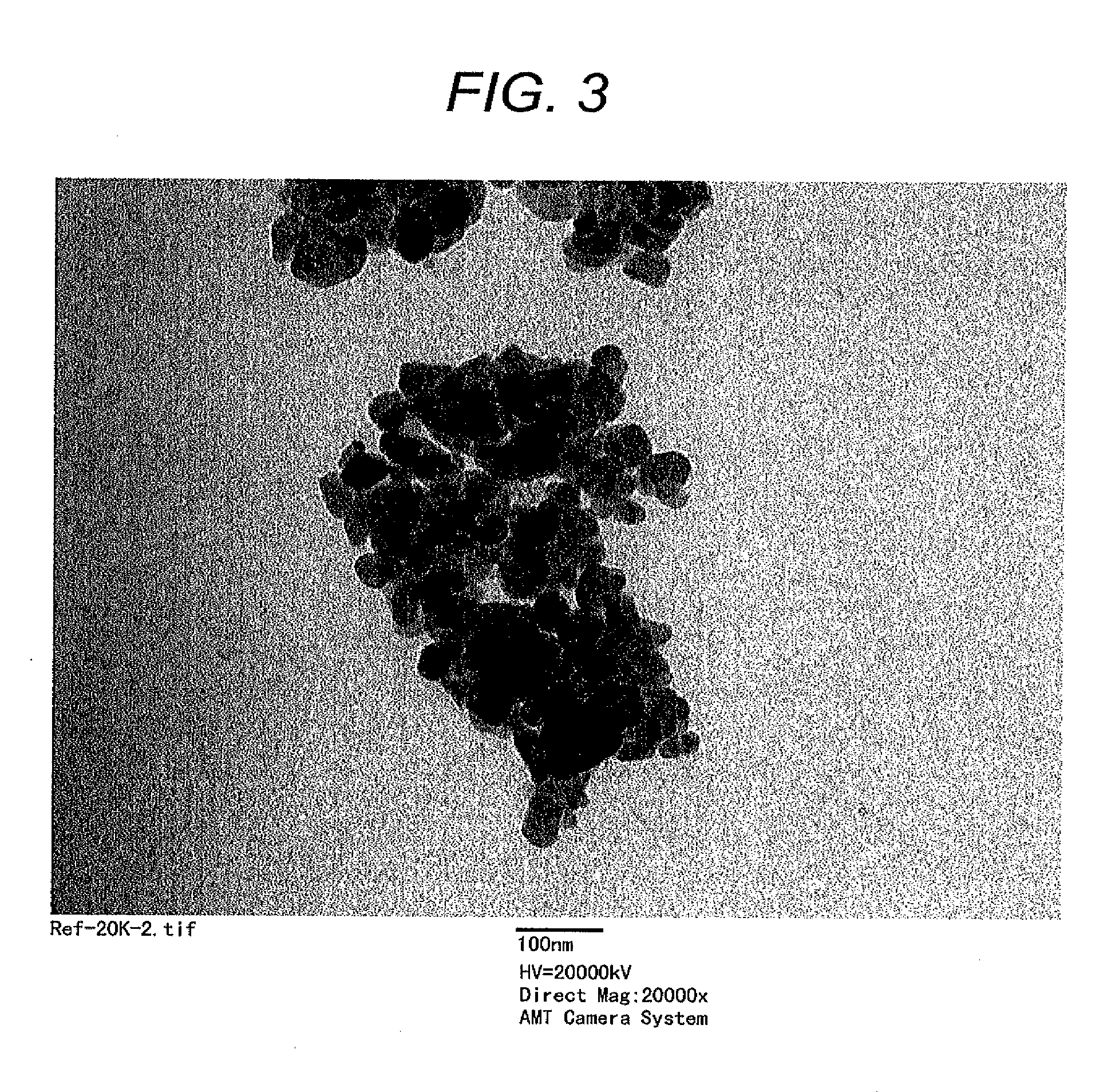Positive electrode active material for lithium ion battery, method for producing the same, positive electrode for lithium ion battery, and lithium ion battery
a lithium ion battery and active material technology, applied in the direction of positive electrodes, electrode manufacturing processes, cell components, etc., can solve the problems of insufficient discharge capacity, poor thermal stability at high temperatures, and small quantity of cobalt, which is a raw material of lithium cobalt oxide, etc., to achieve satisfactory excellent properties, increase diffusion resistance, and reduce the reactivity typified
- Summary
- Abstract
- Description
- Claims
- Application Information
AI Technical Summary
Benefits of technology
Problems solved by technology
Method used
Image
Examples
example 1
Synthesis of Positive Electrode Active Material
[0096]Iron citrate (FeC6H5O7.nH2O) and manganese acetate tetrahydrate (Mn(CH3COO)2.4H2O) as metal sources were weighed so as to give a ratio of Fe to Mn of 2:8, and were dissolved in pure water. Citric acid monohydrate (C6H8O7.H2O) as a chelating agent was added to the mixture of the metal sources and the pure water. The amount of the chelating agent was adjusted depending on the amounts of other citrates so that the amount of citric acid ions was 80 mole percent of the total amount of metal ions. Coordinating citric acid ions around metal ions suppresses the formation of precipitates and thereby gives a solution of uniformly dissolved raw materials.
[0097]Next, lithium dihydrogen phosphate and a lithium acetate aqueous solution were added to the solution, and thereby a solution containing all the raw materials dissolved therein was yielded. The solution had a concentration of 0.2 mol / l in terms of metal ions.
[0098]The charge composition...
example 2
[0103]LiFe0.2Mn0.77Mg0.03PO4 was synthetically prepared by the same procedure as of Example 1, except for using iron citrate (FeC6H5O7.nH2O), manganese acetate tetrahydrate (Mn(CH3COO)2.4H2O), and magnesium hydroxide (Mg(OH)2) in a ratio of Fe:Mn:Mg of 2:7.7:0.3 as metal sources. The sample had a particle diameter d of 40 nm, a crystallite diameter D of 30 nm, and an amount of carbon coating of 2.6 weight percent.
example 3
[0104]LiFe0.6Mn0.4PO4 was synthetically prepared by the same procedure as of Example 1, except for using iron citrate (FeC6H5O7.nH2O) and manganese acetate tetrahydrate (Mn(CH3COO)2.4H2O) in a ratio of Fe:Mn of 6:4 as metal sources. The sample had a particle diameter d of 45 nm, a crystallite diameter D of 36 nm, and an amount of carbon coating of 2.8 weight percent.
PUM
| Property | Measurement | Unit |
|---|---|---|
| diameter | aaaaa | aaaaa |
| diameter | aaaaa | aaaaa |
| weight percent | aaaaa | aaaaa |
Abstract
Description
Claims
Application Information
 Login to View More
Login to View More - R&D
- Intellectual Property
- Life Sciences
- Materials
- Tech Scout
- Unparalleled Data Quality
- Higher Quality Content
- 60% Fewer Hallucinations
Browse by: Latest US Patents, China's latest patents, Technical Efficacy Thesaurus, Application Domain, Technology Topic, Popular Technical Reports.
© 2025 PatSnap. All rights reserved.Legal|Privacy policy|Modern Slavery Act Transparency Statement|Sitemap|About US| Contact US: help@patsnap.com



